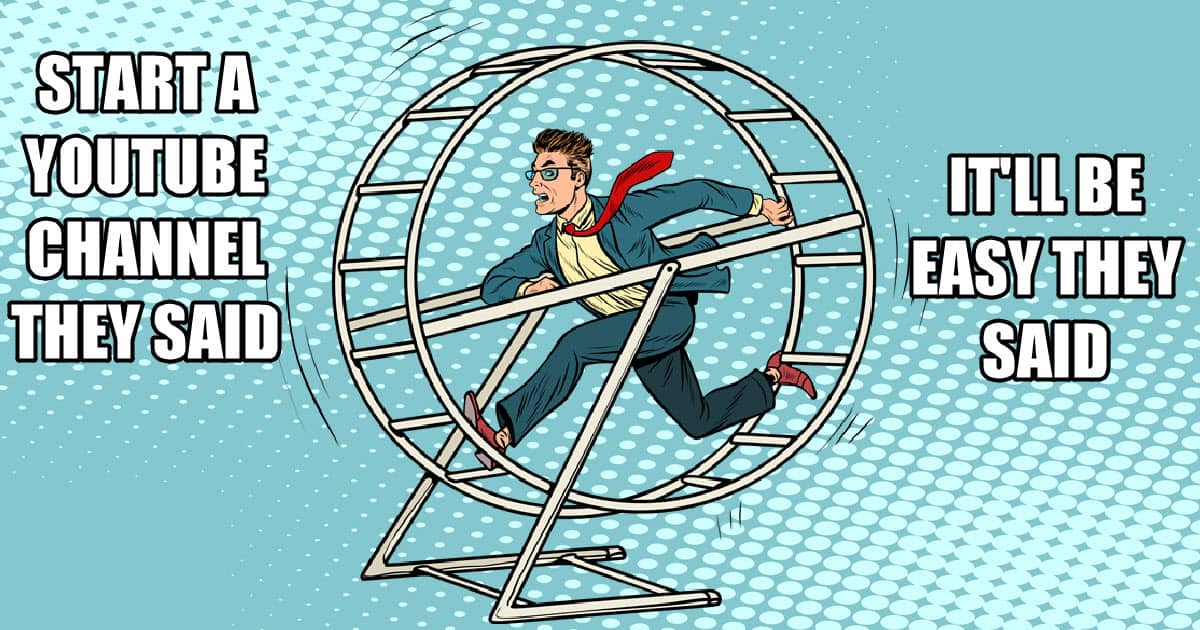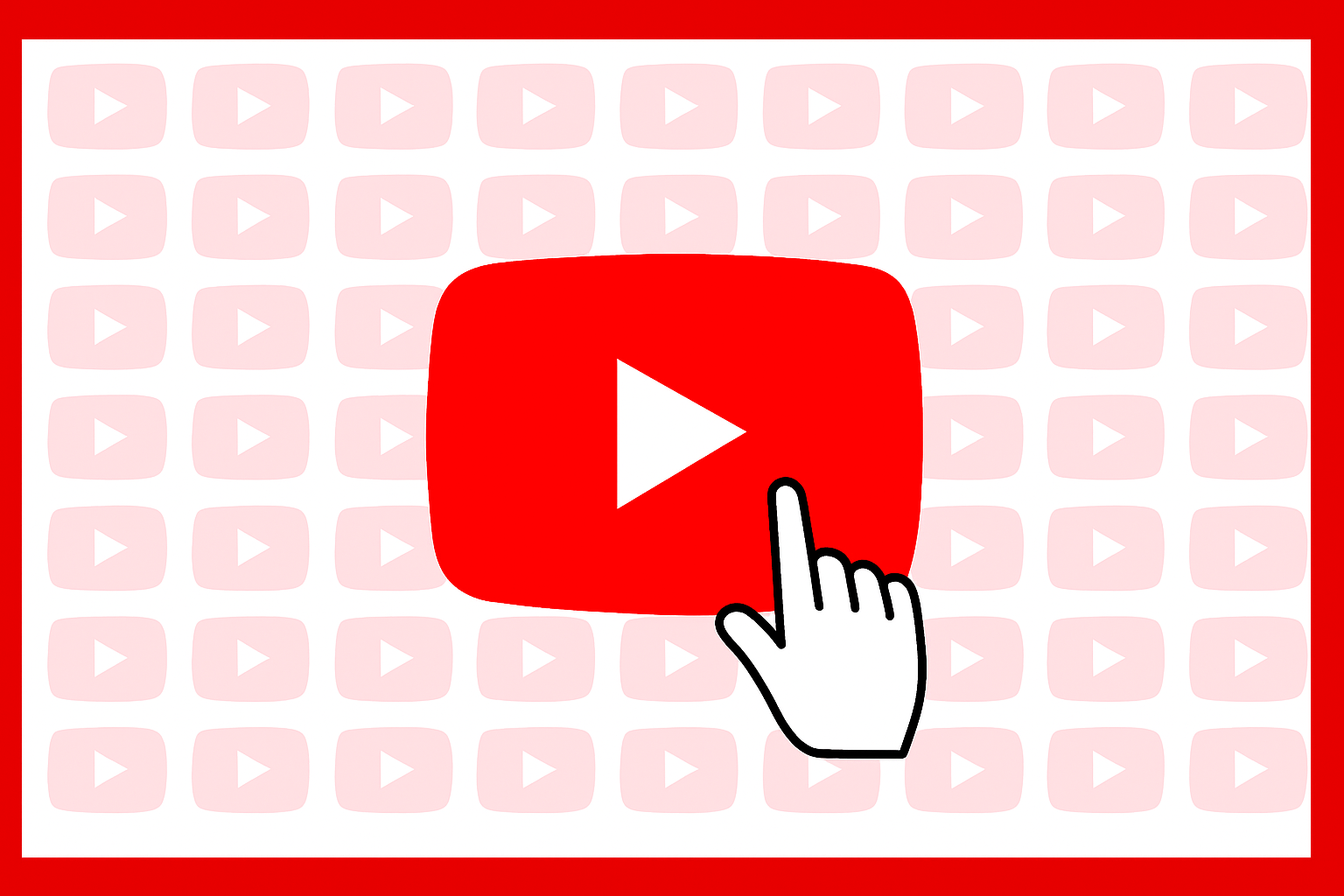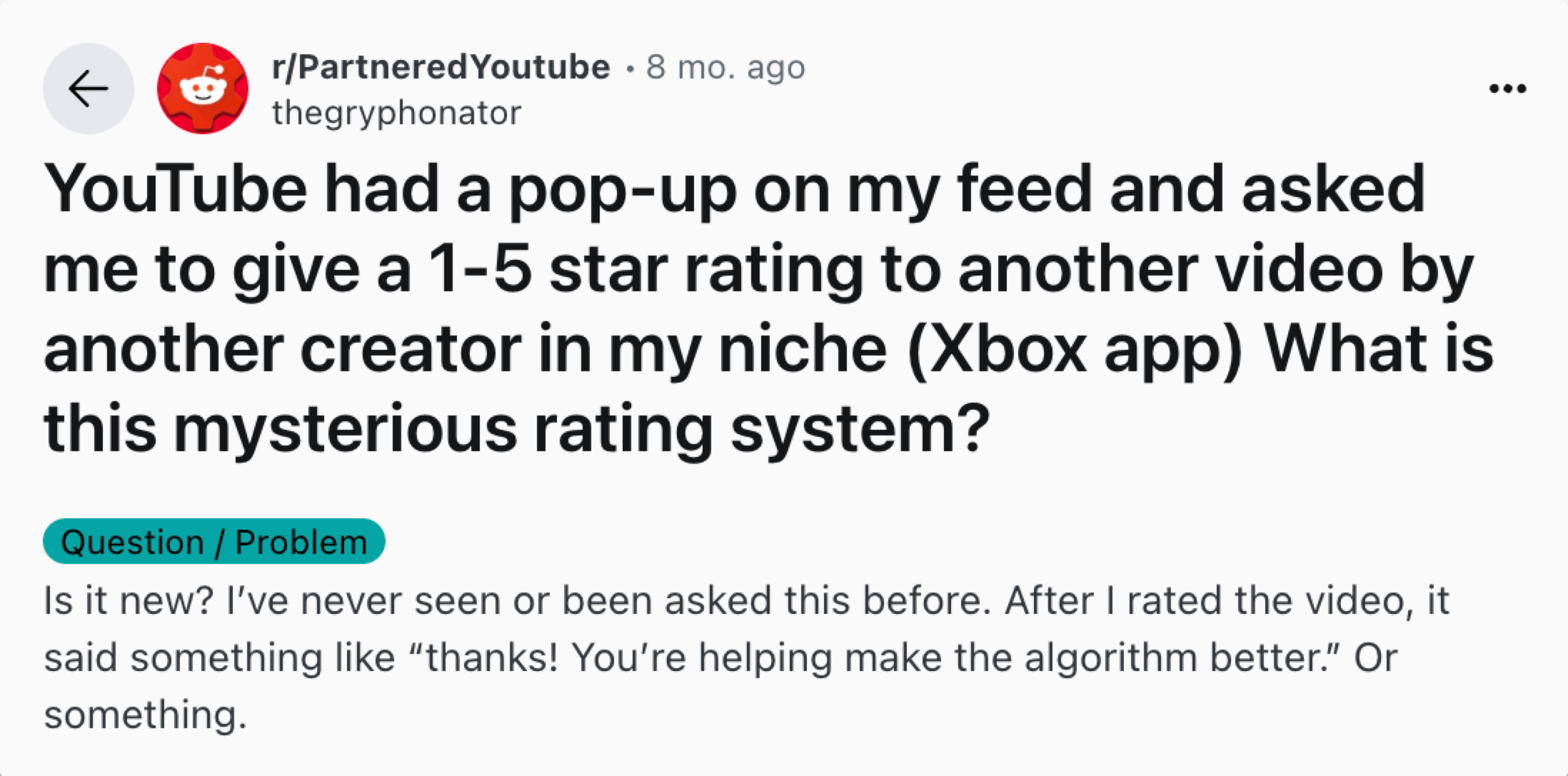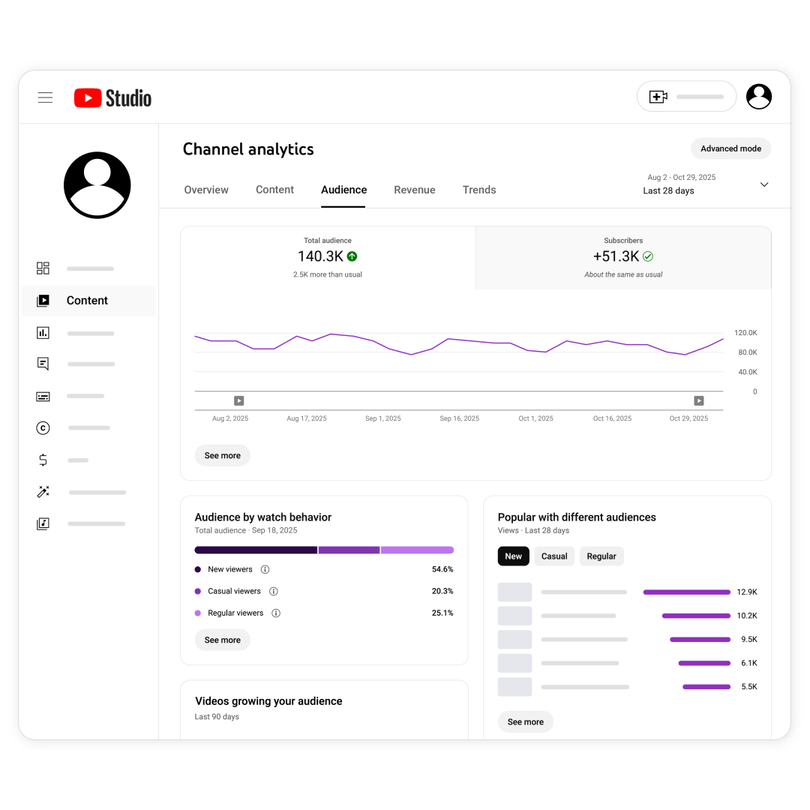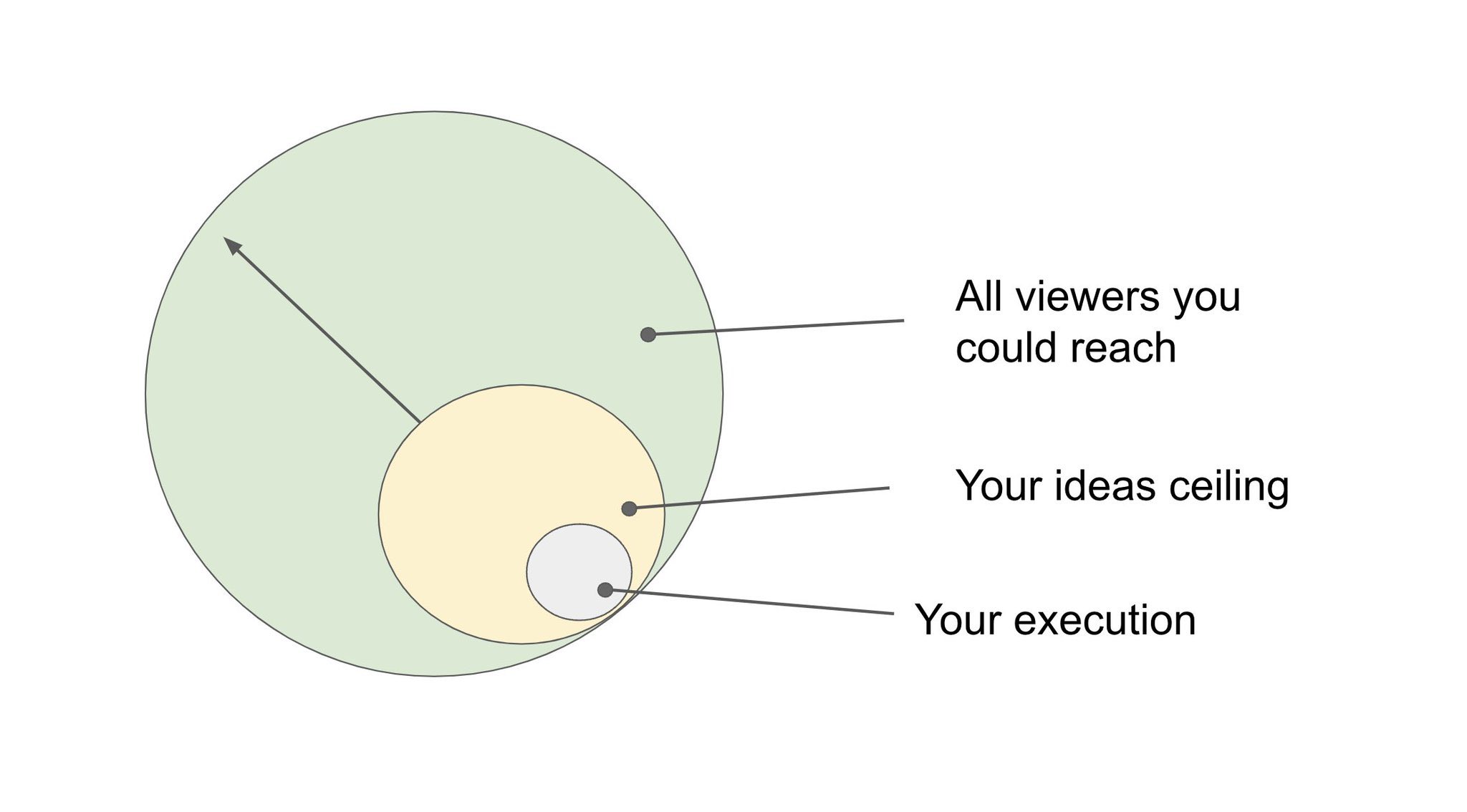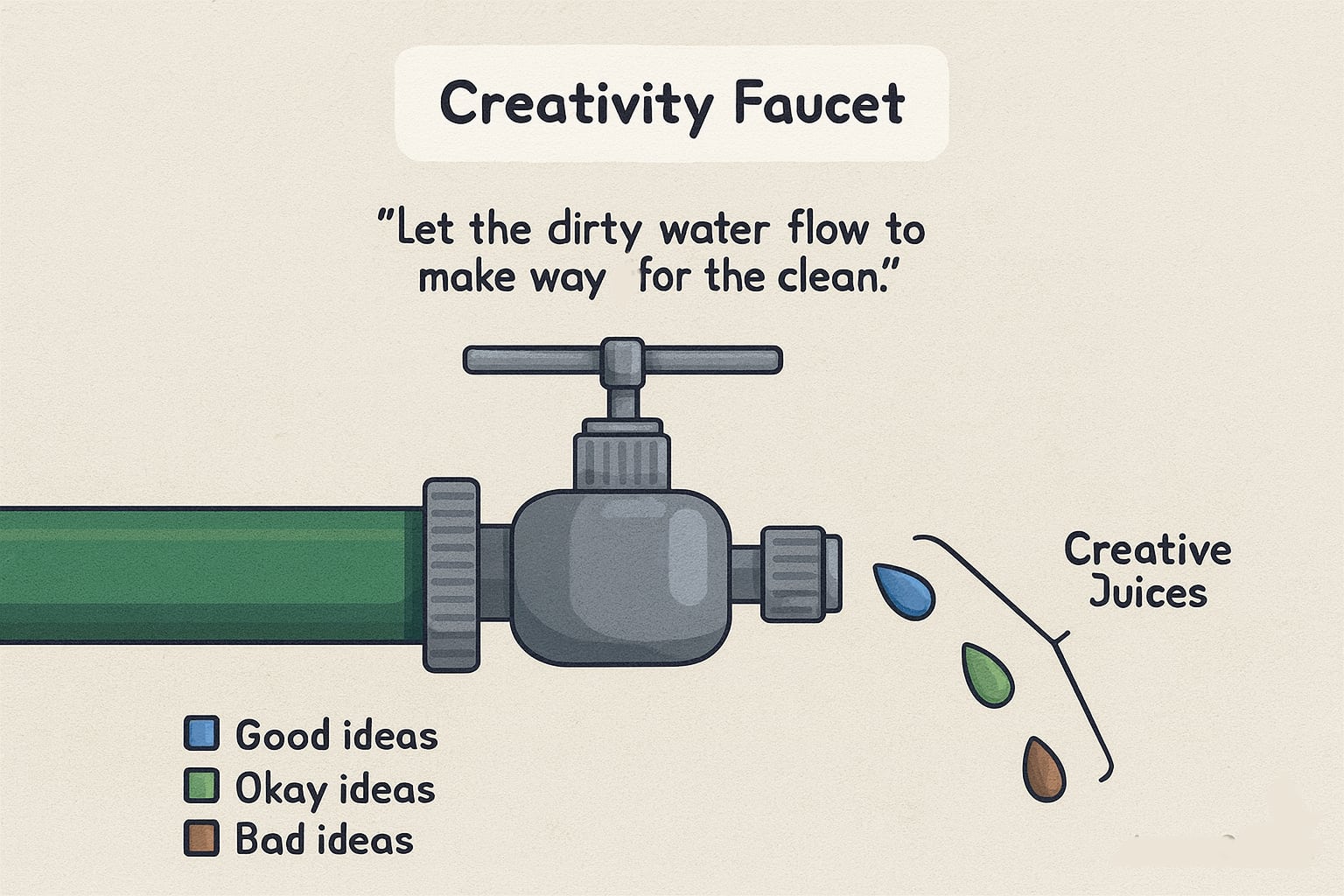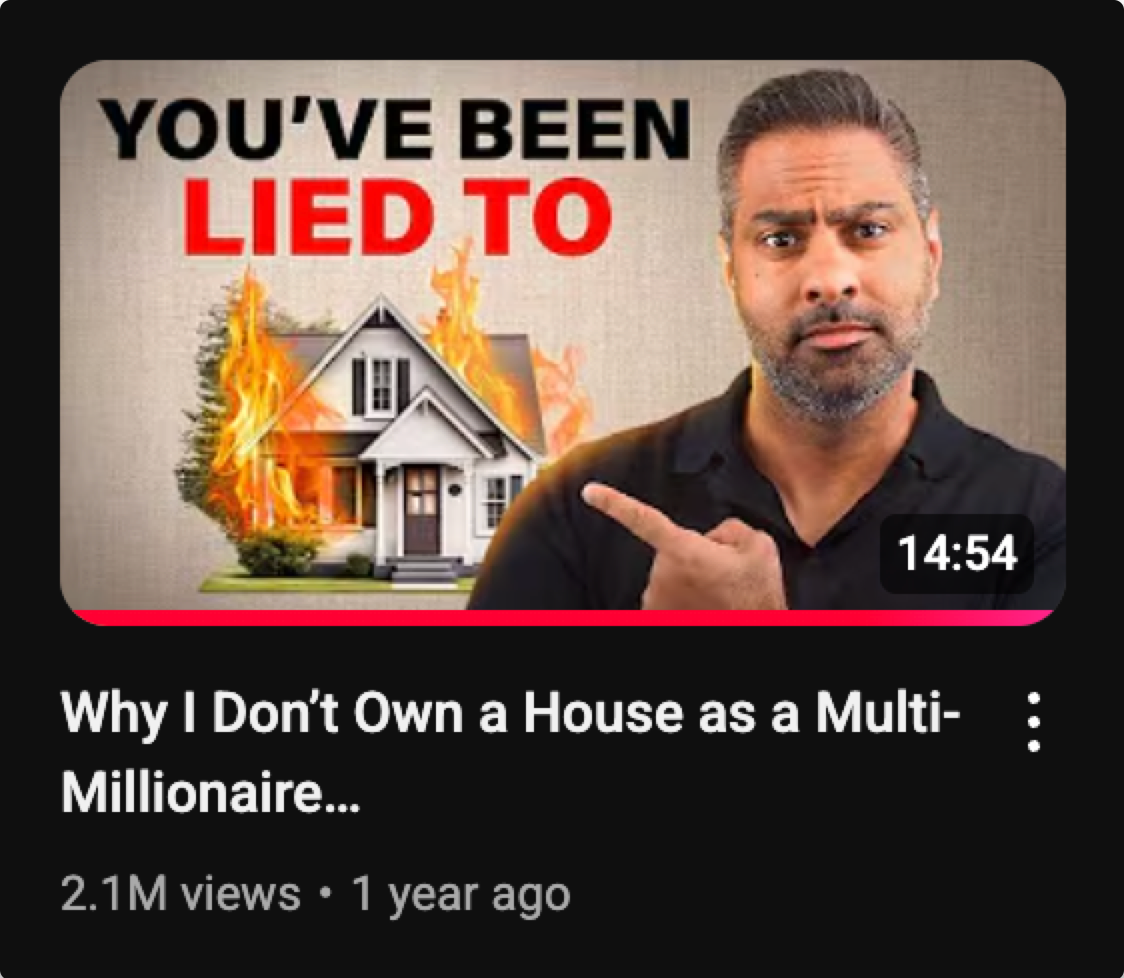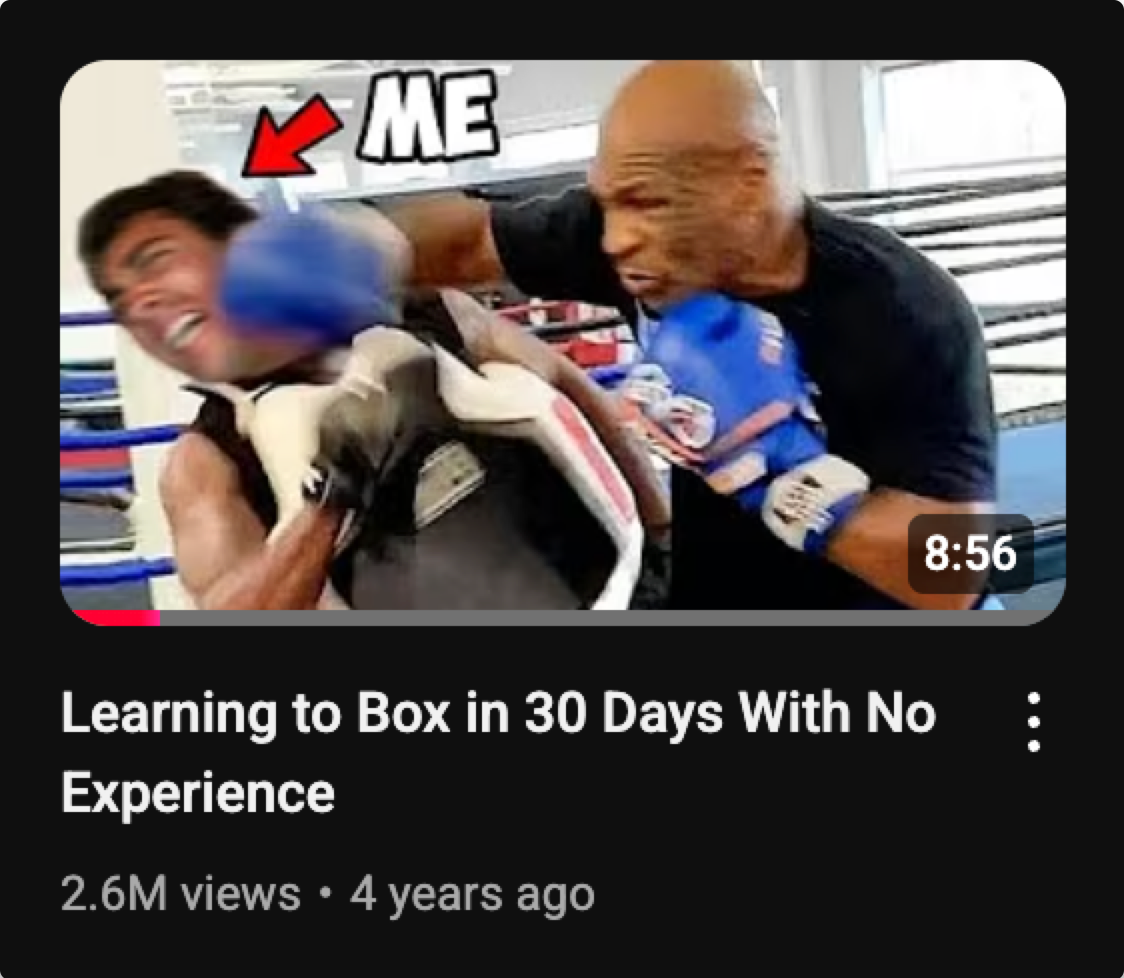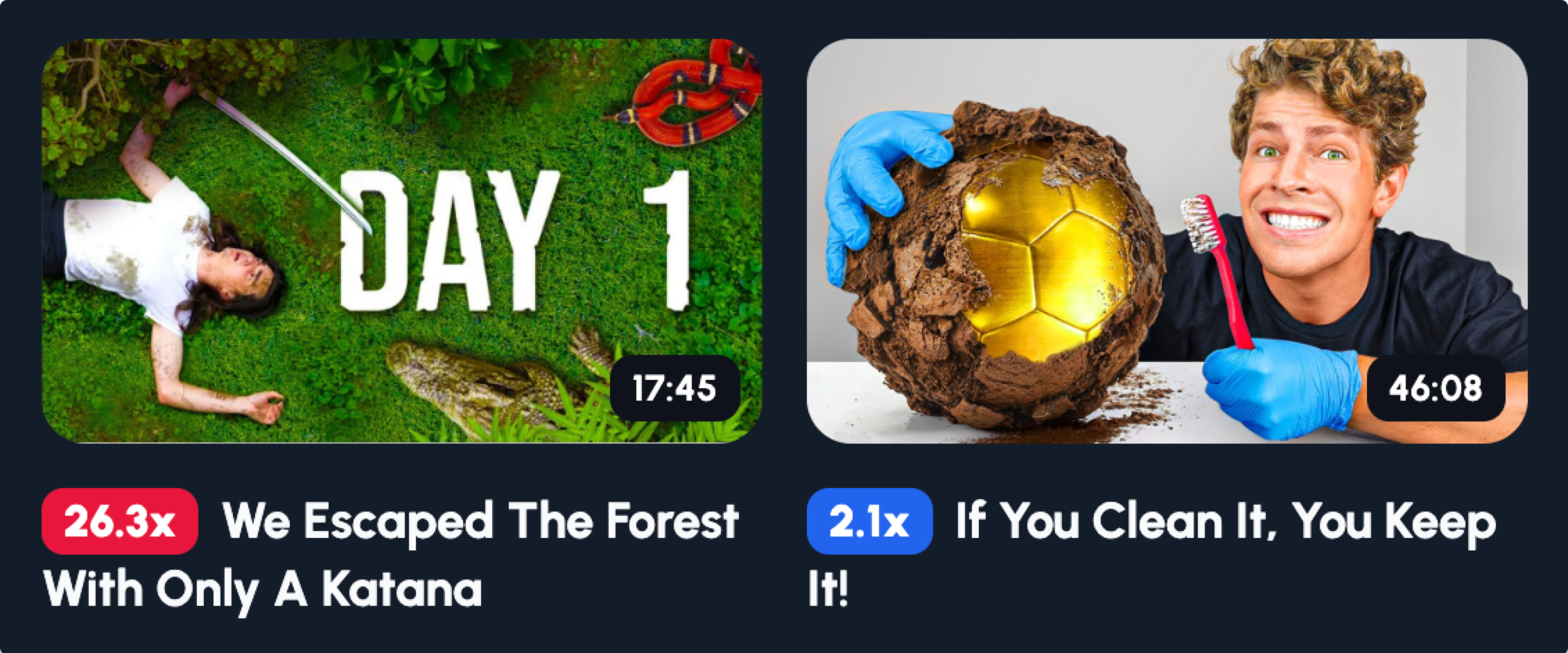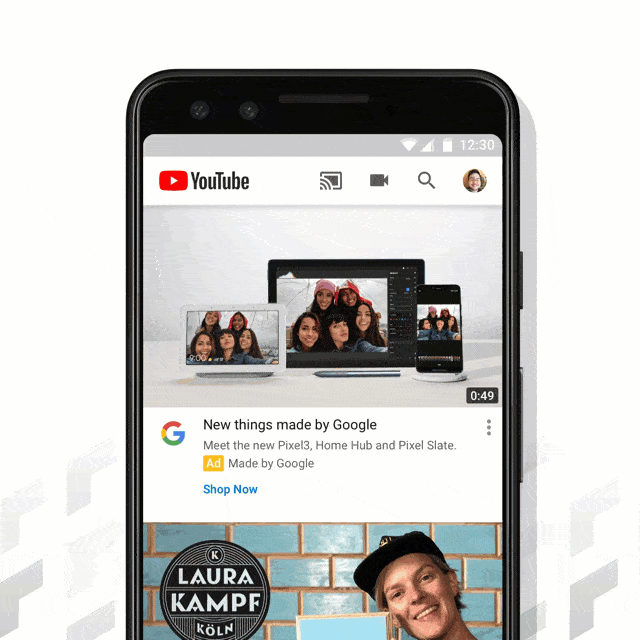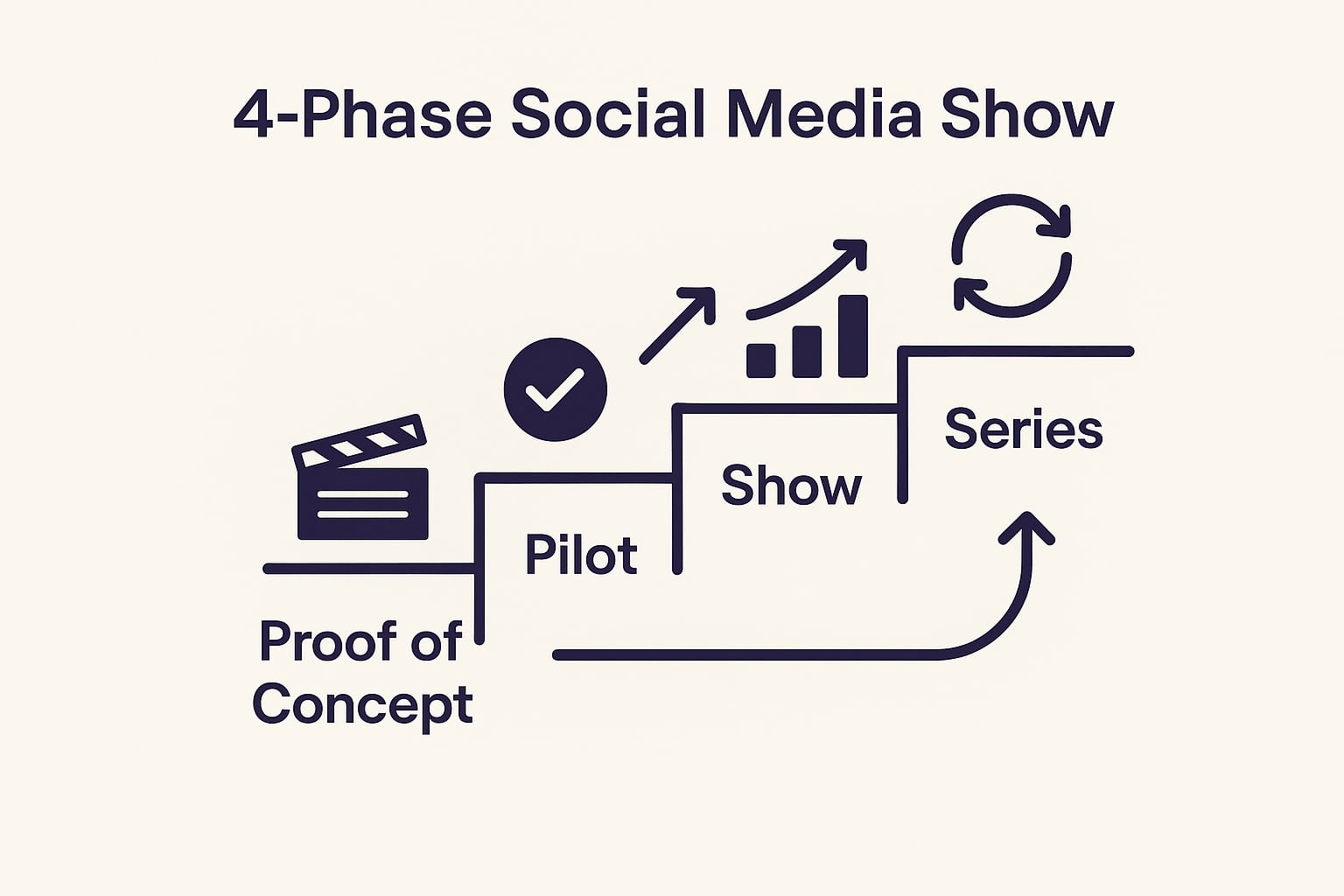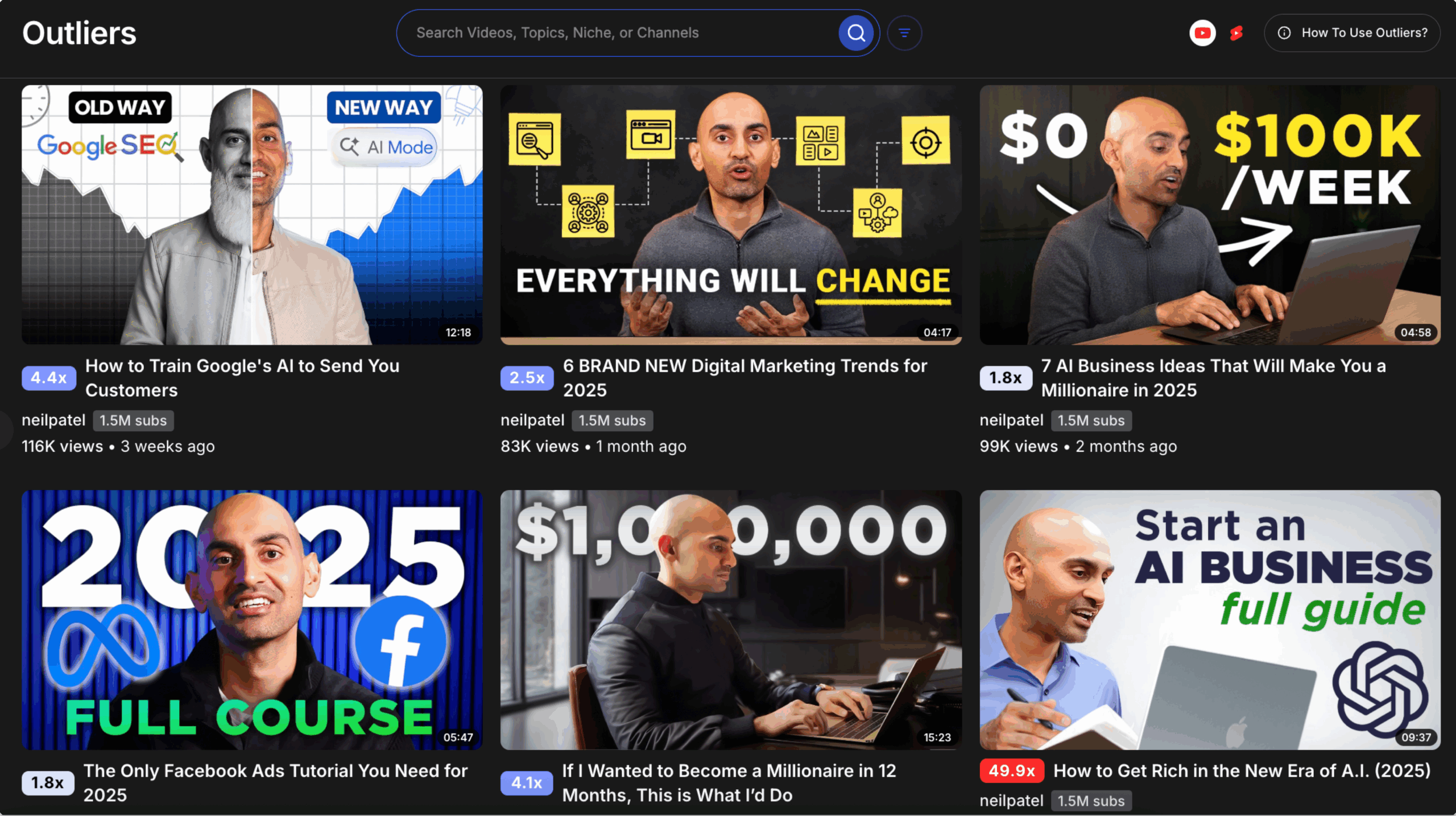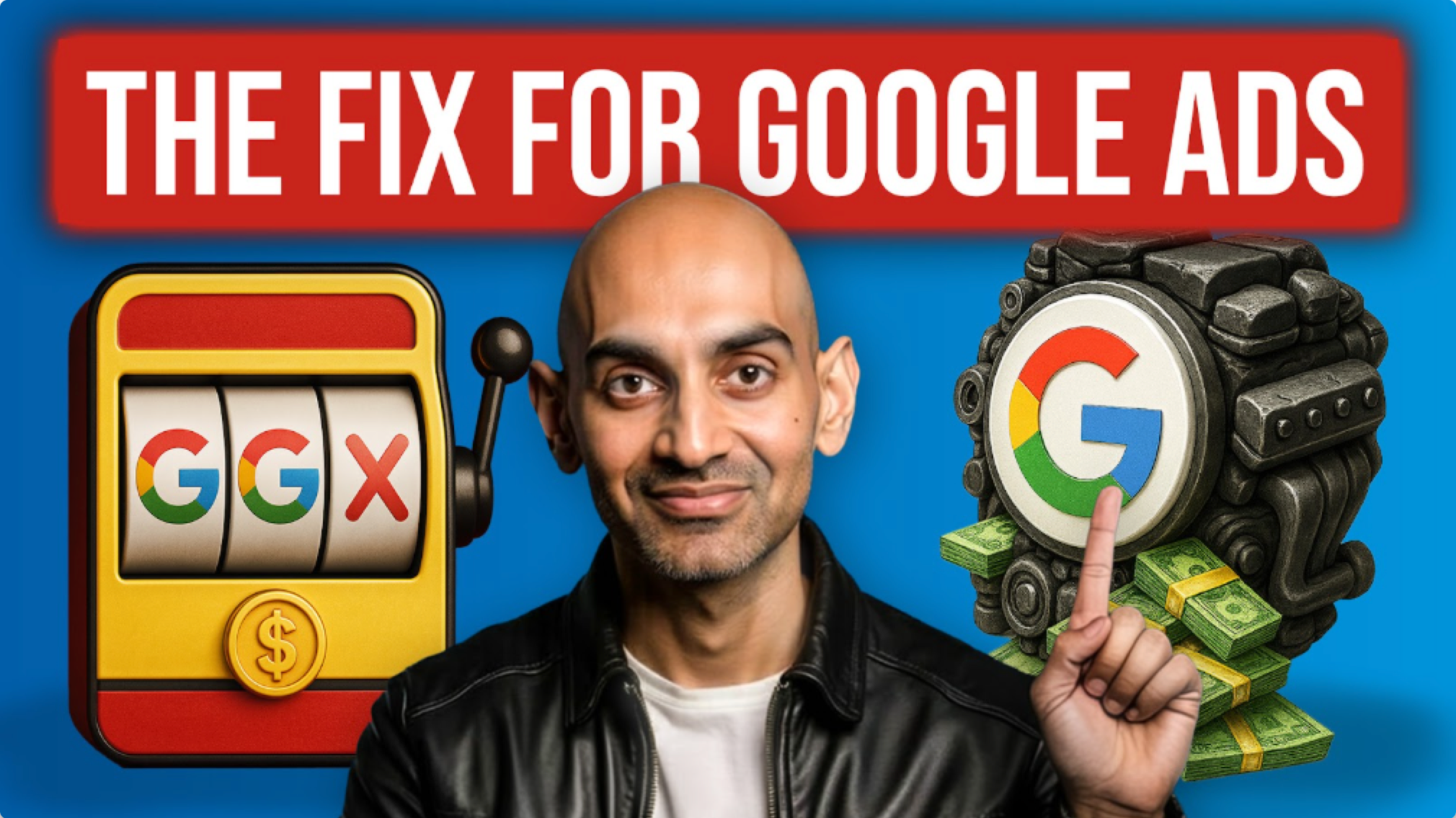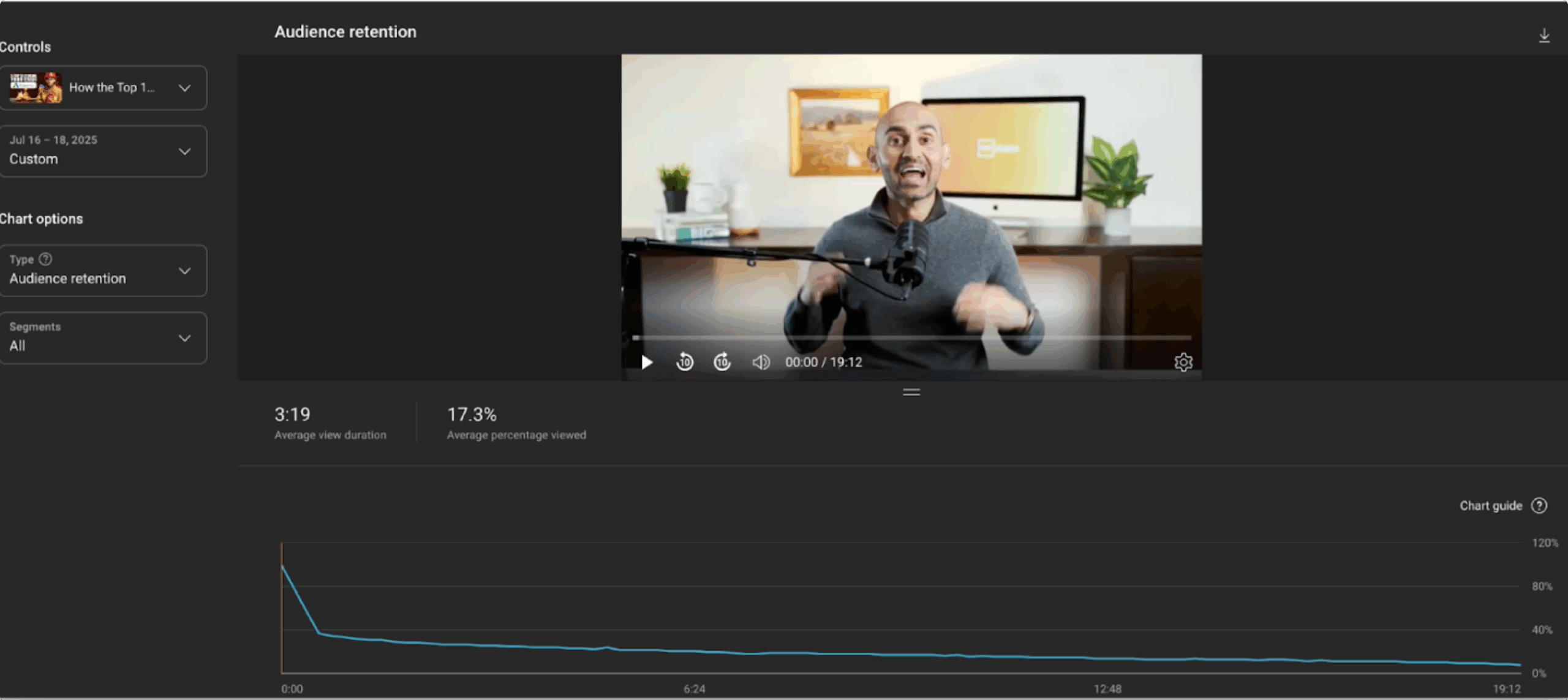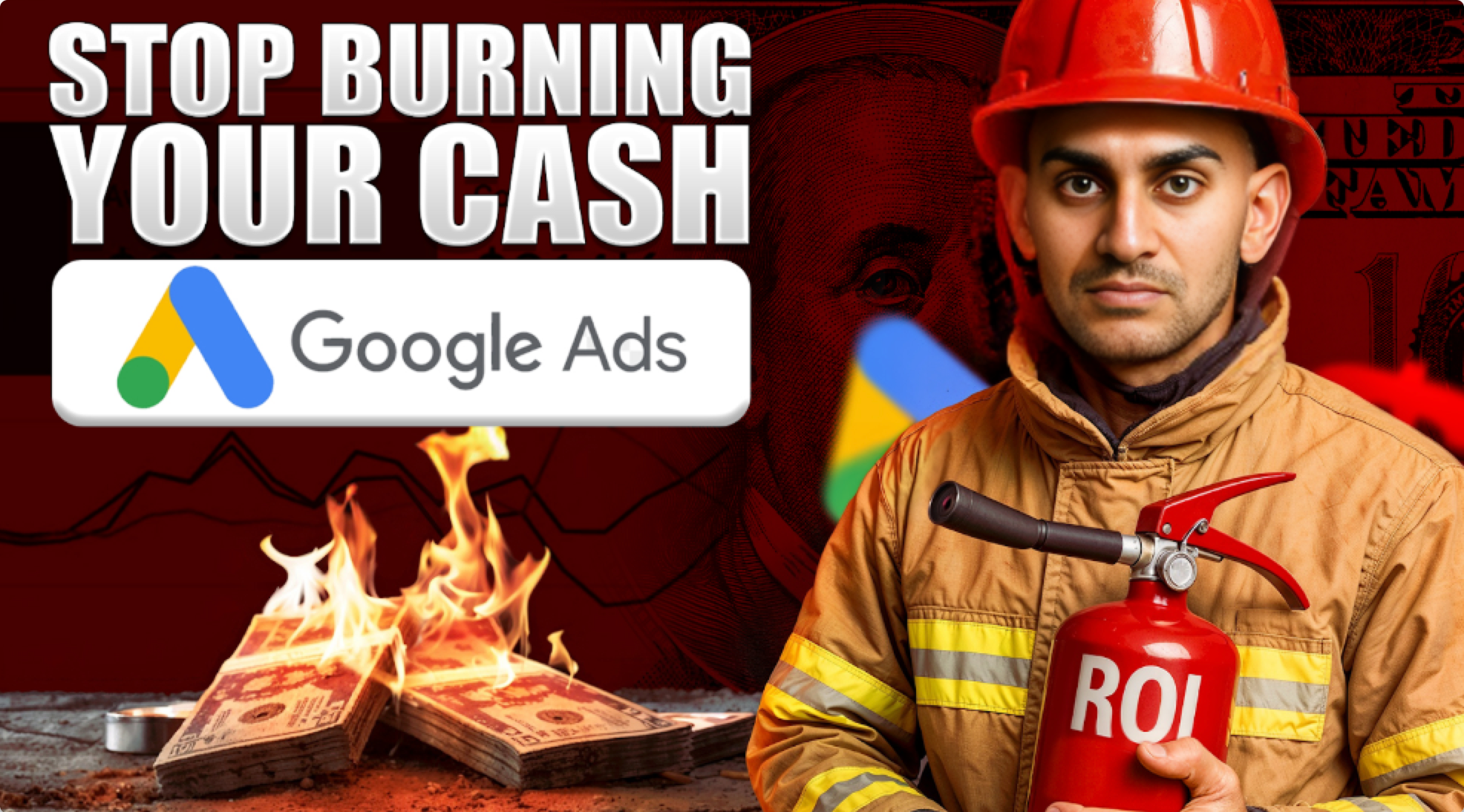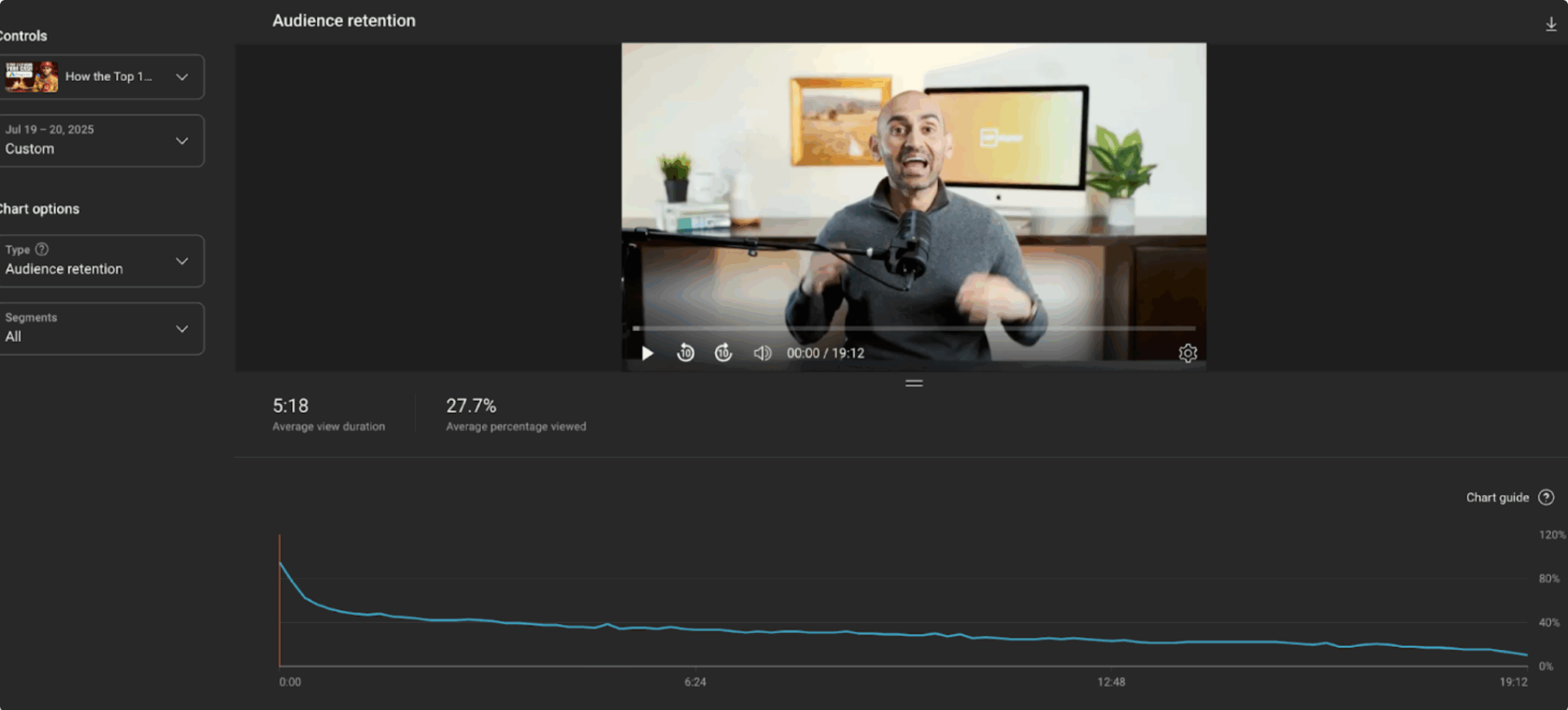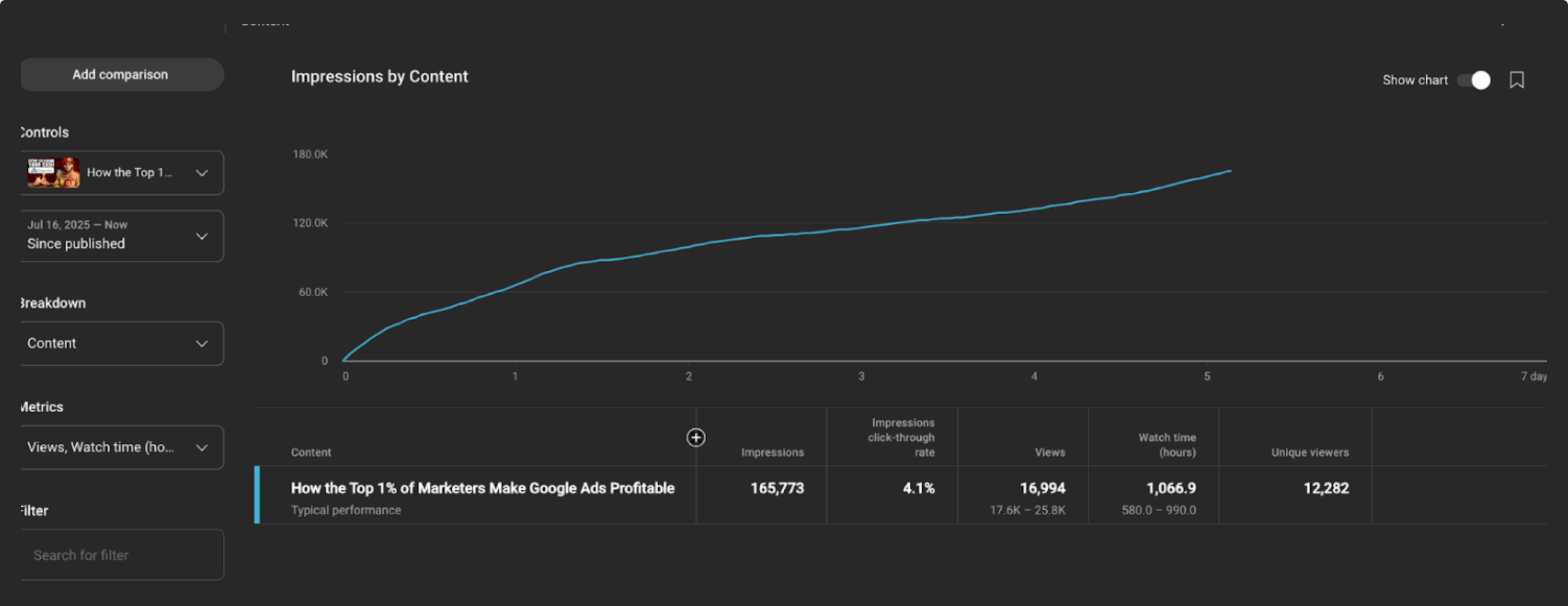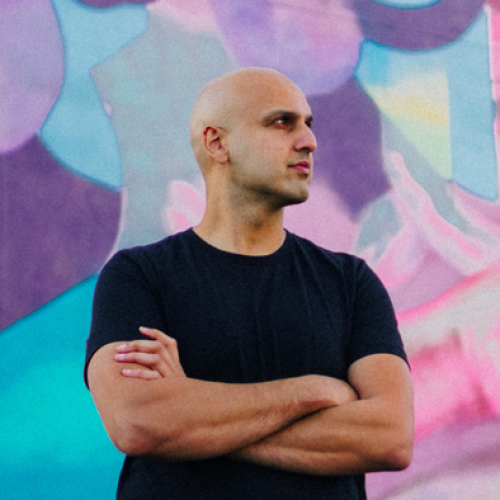Most experts are playing the wrong game on YouTube. They lack a clear YouTube strategy and treat it like a dumping ground for content instead of the most powerful stage to build authority. They copy entertainers, chase trends, and try to hack the algorithm. Then they burn out feeding the content machine, wondering why they’re still invisible in their industry.
I’ve spent more than 15 years in digital marketing, helping subject matter experts, founders, and personal brands launch and scale across Instagram, TikTok, and YouTube. Across every platform, the same truth holds: the experts who win consistently don’t just show up on camera. They think like strategists. They build systems rooted in psychology, not platform hacks.
TikTok, Reels, and short form vertical video is built to shape behavior in the moment. It studies every swipe, pause, and replay to keep you scrolling. YouTube “long form” content works differently. It builds a long-term memory of what you watch, who you trust, and the topics you return to over months and years.
That is why YouTube is a different game entirely. It is not just another video app fighting for attention. It is the main stage of entertainment. Nielsen’s latest data shows YouTube now commands 12.8 percent of all television viewing time, more than Disney, Netflix, or NBCUniversal. When you upload a video, you are not competing with other youtube creators. You are competing with prime-time TV.
And YouTube is not really a video platform at all. It is a human behavior platform. Understanding this difference changes everything about how you should approach your Youtube strategy as an expert.
This guide began as a private playbook for my team at The Limitless Company. Now I’m sharing it publicly so more experts can build a personal brand YouTube strategy that actually works.
Key Takeaways:
- YouTube is a click-and-watch platform, not just a place to upload videos. The algorithm follows audience behavior, so growth comes from understanding what makes real people click and keep watching—especially now that autoplay previews let viewers “sample” your content before committing.
- More content isn’t better, better systems are. The most successful experts on Youtube post less, think more, and build structured workflows that deliver quality and compound over time. When you’re rushing to meet daily deadlines, you can’t invest the time needed for systematic ideation and strategic packaging.
- The idea, title, and thumbnail can make or break your video. Your packaging matters as much as (or more than) the video itself, because if no one clicks, nothing else matters. But now the first few seconds matter just as much—they’re your “preview trailer.”
- Long-form content builds authority. Shorts can spark discovery, but long-form videos create the depth, expertise positioning, and sustained engagement that turn casual viewers into loyal followers, clients, or customers.
- The goal isn’t virality, it’s strategic advantage. Think like a media company, not a content factory. You’re not just making videos; you’re creating intellectual property that builds identity, trust, and leverage in the creator economy.
Why Most YouTube Advice Fails in 2025
Walk into any marketing conference or scroll through YouTube “growth guru” videos and you’ll hear the same recycled advice: “Post consistently,” “follow the algorithm,” “hop on trends,” “optimize for watch time.”
For subject matter experts, this advice isn’t just unhelpful, it can actually work against your long-term positioning. Here’s why conventional YouTube wisdom keeps experts stuck, and what brain science tells us about why these approaches backfire.
The Algorithm Obsession Trap
Most experts think YouTube’s algorithm is some mysterious gatekeeper they have to appease. They spend hours trying to decode mythical “algorithm changes” and tweaking upload times based on outdated advice.
Here’s the truth: The algorithm isn’t your audience. The algorithm is a reflection of your audience.
YouTube’s AI doesn’t decide if your content is good. It predicts human behavior based on how real people interact with your videos. When viewers click your thumbnail, watch your entire video, and immediately watch another one of your videos, the algorithm takes notice. It’s not magic, it’s pattern recognition.
Neuroscientists Robert Desimone and John Duncan discovered that our brains have a built-in selective attention system that constantly scans for what feels relevant, rewarding, or emotionally engaging. We instinctively ignore anything that feels boring or confusing. YouTube’s algorithm works exactly the same way: it surfaces videos that people find meaningful, interesting, or entertaining.
The most successful experts on YouTube don’t try to “beat” the algorithm, they build a YouTube strategy designed around how real people behave. This means understanding their audience so deeply that the algorithm has no choice but to promote their content. When your content captures attention and delivers genuine value, the algorithm notices because real viewers noticed first.
The “Just Post More” Myth
“Post more content” is one of the most common pieces of advice for experts. It’s also one of the most misleading when taken at surface level. When experts aren’t seeing growth, the knee-jerk response is often to increase posting frequency. From once a week to three times or from twice a week to daily. This approach treats symptoms instead of causes.
I’ve seen channels go from uploading four times a week to just once a month, and grow faster than ever. What changed? They stopped treating YouTube like a creator hamster wheel and started treating it like a real authority platform for their expertise. But I’ve also seen experts find success posting consistently 2-3 times per week when they have strong systems in place.
The real problem isn’t frequency, it’s resource allocation without strategy. When you’re rushing to meet arbitrary posting goals, you can’t invest the time needed for systematic ideation, strategic packaging, and quality production. If your current videos aren’t resonating with your audience, producing more of the same content faster won’t solve the underlying issues.
Think about it practically: If your videos are averaging 1,000 views each, posting 10 times more often might get you 10,000 total views. But one video that truly connects with your audience and hits 10,000 views will teach you more about what works than ten videos that don’t resonate.
The difference becomes clear in audience behavior. When someone discovers your channel through an exceptional video, they’re more likely to binge-watch your catalog and subscribe. But when they find you through mediocre content created under time pressure, they bounce—and the algorithm notices that pattern too.
This is why successful subject matter experts focus on systematic content development rather than arbitrary posting schedules. A subject matter expert posting once a week with strong ideation systems will often outperform someone posting daily without strategy. The best youtuber’s will tell you that “consistency of quality” matters more than “consistency of timing.” Short-form content operates differently, and daily shorts can work because they require less strategic depth. But substantial long-form videos demand a different approach entirely.
The Trend-Chasing Hamsterwheel
Nothing kills long-term growth faster than abandoning your unique value to chase viral trends. When subject matter experts constantly pivot to whatever’s popular this week, they confuse their audience, dilute their positioning, and compete in oversaturated spaces where they have no competitive advantage.
This is what youtubers call “trend vertigo”. It’s the dizzying cycle of jumping from trending topic to trending topic, hoping something sticks. Meanwhile, experts who identify their unique angle and systematically develop it build a sustainable moat around their authority.
The brain’s reward system—centered in the striatum and powered by dopamine—responds most strongly to novelty that feels personally relevant. Random trends might trigger curiosity, but they don’t build the deeper satisfaction that comes from consistent value delivery. When Wolfram Schultz and his team studied dopamine responses in the 1990s, they found that the brain gets excited by new experiences, but only forms lasting engagement when those experiences consistently deliver meaningful rewards.
That’s why trend-chasing feels exciting in the moment but leaves you exhausted and directionless in the long run. Your brain—and your audience’s brain—craves both novelty and reliability. For experts, the sweet spot is fresh perspectives on consistent themes, not constant pivoting to unrelated topics.
Trend-chasing may feel productive, but it rarely works for experts. What you need instead is an expert YouTube growth strategy rooted in authority-building and human behavior. The experts who build lasting influence don’t chase every shiny object. They become the trusted source their audience turns to for a specific type of value, delivered with their unique perspective and expertise.
How YouTube’s Algorithm Actually Works in 2025
YouTube’s algorithm is not a black box. It’s a mirror of human psychology. The platform’s recommendation system operates on the same principles that govern how our brains process attention and make decisions. Understanding this connection is the key to sustainable growth, because when you design content for how the human brain actually works, the algorithm has no choice but to promote it.
YouTube Is a “Click-and-Watch” Platform
As strategist Paddy Galloway shares in an interview with Collin and Sameer, YouTube operates on a simple two-step process: someone sees your content in their feed, decides to click, then watches (or doesn’t). For experts, this means every view begins with a conscious decision from the viewer. They are investing their time to hear your perspective or learn from your expertise. Unlike passive feeds like TikTok or Instagram Reels that automatically play as you scroll, YouTube requires an active decision from every viewer before they consume your content.
Understanding this is crucial because it means your success depends entirely on mastering two psychological moments: the moment someone decides to click, and the moment they decide to keep watching after that click.
But here’s what’s changed: YouTube has evolved the click decision to reduce “regretful clicks” and wasted time. The platform now shows autoplay previews on both mobile and desktop home feeds—your video plays for 1-2 seconds without sound as people scroll on mobile or hover over thumbnails on desktop. This gives viewers a “sample” of your content before they commit to the full click, though you won’t see these previews when videos are suggested in the sidebars.
This evolution mirrors how our brains actually make decisions. The anterior cingulate cortex—the brain region that helps us weigh effort versus expected reward—is constantly evaluating whether something is worth our attention. Researchers Amitai Shenhav, Matthew Botvinick, and Jonathan Cohen found that this brain area performs a kind of cost-benefit analysis every time we’re deciding whether to engage with something new.
The click decision now includes three elements: your static thumbnail, your title, and a dynamic preview that shows your energy, pacing, and visual style. It’s like letting someone peek into a restaurant through the window before deciding to go in—they still have to make the choice to enter, but now they’re doing it with much more confidence.
What YouTube’s Algorithm Is Really Looking For
YouTube isn’t just tracking how long someone watches a video—it’s trying to understand how much value they got from it. Just because someone finishes a video doesn’t mean they liked it. They might have been distracted, let it play in the background, or stayed out of habit rather than genuine interest. This means the platform is evaluating whether your content left viewers feeling informed, inspired, or more confident in your expertise.
YouTube runs daily surveys with millions of users asking whether videos were enjoyable, satisfying, or worth their time. This data feeds into “valued watch time”—a metric that measures real satisfaction, not just raw viewing duration. As Cristos Goodrow, YouTube’s VP of Engineering, explains: “We don’t want viewers regretting the videos they spend time watching. We realized we needed to do even more to measure how much value you get from your time on YouTube.”
This approach is backed by brain science. When someone genuinely enjoys content, specific reward centers activate. Researchers Suzanne Haber and Brian Knutson found that areas like the striatum and orbitofrontal cortex—parts of the brain’s reward system—light up when we experience real satisfaction. These are the same regions that help a viewer decide whether your insights were truly worth their time, and whether they should come back for more of your perspective.
The Three Audience Segments That Drive Growth
YouTube breaks down your audience into three distinct segments, and sustainable growth requires serving all three simultaneously:
New viewers have watched your content for the first time. They’re discovering you through search, browse features, or recommendations from other videos.
Casual viewers have watched your channel occasionally—at least once per month for 1-5 months in the past year. They know who you are, but they haven’t yet committed to seeing you as their go-to authority.
Regular viewers are your loyal audience who’ve watched consistently for 6+ months. They actively seek out your expertise and are the core of your most engaged community. These are the people most likely to become clients, customers, or advocates.
Most subject matter experts unknowingly create content for just one of these groups and wonder why their growth plateaus. The smartest experts design content using what strategist call the “80% Overlap Rule.” If someone loves your latest video, there should be an 80% chance they’d also love your video from three months ago. This creates coherent audience growth instead of confused, fragmented viewership.
For example, instead of “Advanced Photoshop Layer Masks (Part 47)” which only appeals to hardcore followers, try “The Photo Editing Mistake That Ruins Every Picture.” This title works for all three audience segments — beginners learn what to avoid, intermediates get a refresher, and advanced viewers might discover a nuance they missed — while reinforcing your authority across the board.
When you consistently serve all three audience segments, each group reinforces the others. New viewers become casual viewers, casual viewers become regulars, and regular viewers help your content reach more new people through engagement and sharing. That’s how experts build not just a YouTube channel, but a long-term authority platform.
The 5 Psychology-Based Youtube Strategies That Actually Work
Most YouTube advice focuses on platform tactics that become obsolete with every algorithm update. The strategies that create lasting success are rooted in human psychology. That’s because while platforms change constantly, the way our brains process attention and value remains stable. These five evidence-based strategies work because they align with how people actually discover, click, and engage with video content.
These five strategies work together as an integrated system. Skip one, and the others become less effective. Master all five, and you’ll have a YouTube strategy that works regardless of algorithm changes, trend cycles, or platform updates. This will strengthen and maximize authority in your field.
Strategy 1: How to Come Up With YouTube Video Ideas That Get Views
Most creators spend 90% of their time on production and only 10% on ideation. But a high-performing YouTube content strategy flips that ratio. According to strategist Paddy Galloway, the idea sets the ceiling for every video’s potential. Perfect execution of a weak idea will always underperform a good idea that reinforces your expertise.
The Time Allocation Problem
Here’s a brutal truth from analyzing top YouTube strategists: struggling creators spend a few hours per week on ideas, while successful creators spend 15-20 hours. If ideation drives the majority of your success, it should get the majority of your creative energy.
The prefrontal cortex—the brain’s executive center responsible for planning and decision-making—performs best when it has time to process information without pressure. For experts, this is when unique angles, signature concepts, and high-value educational frameworks emerge. Neuroscientist Daniel Levitin found that when we rush creative decisions, we default to obvious, surface-level ideas. But when we give our brains time to make connections, we generate more original and compelling concepts.
The Creative Faucet Method
There’s a perfect metaphor that explains creative ideation: think of your brain like a faucet. When you first turn it on, the water runs dirty—murky, random, and uninspired. But if you let it run long enough, clear water starts to flow.
This is why many high-performing creators use what’s called the Creative Faucet Method. It’s not about finding 100 perfect concepts, but pushing through the mental noise to reach the breakthrough ideas. The practice is simple but powerful: generate 100 raw video ideas each week using this breakdown:
40% Market Research – Analyze breakout videos in your niche using tools like VidIQ or Viewstats. Look for patterns in what’s working, but don’t copy—understand the underlying psychology.
40% Audience Mining – Scan comments on your videos and competitors’ content. Check Amazon book reviews in your topic area to find recurring questions or pain points.
20% Innovation – Experiment with cross-niche mashups and unexpected creative angles that push boundaries while staying relevant.
The goal isn’t for all 100 ideas to be brilliant—it’s volume that leads to breakthrough. To do that you’ll want to apply these filters to your ideas:
- Can you package it compellingly?
- Could it hit your view targets?
- Are you excited to create it?
- Does it leverage your unique advantages?
- Will it serve new, casual, and regular viewers simultaneously?
Once your creative faucet runs long enough, 3-5 genuinely compelling concepts will emerge from the noise.
Strategy 2: How to Increase YouTube Click-Through Rate (Packaging Psychology)
If YouTube is a “click-and-watch” platform, packaging represents nearly half your success equation. Yet most creators spend weeks perfecting video content and 20 minutes on titles and thumbnails. Your title, thumbnail, and opening seconds are not just about getting a click. They are the first test of whether people see you as a credible and trustworthy authority worth listening to.
The Packaging Spectrum
Top Youtube strategist talk about how every title and thumbnail falls between “boring” and “misleading.” The sweet spot is about 70% toward compelling. It should be exaggerated enough to stop the scroll, but honest enough to satisfy viewers. This works because of what neuroscientist George Loewenstein called the “curiosity gap.” When there’s a difference between what we know and what we want to know, our brains feel compelled to close that gap.
Title Frameworks That Work:
- The Superlative Formula: “World’s Fastest Car Vs Cheetah!”
2. The Contradiction Pattern: “Why I Don’t Own a House as a Multi-Millionaire…”
3. The Time Constraint: “Learning to Box in 30 Days With No Experience”
Thumbnail Psychology
Limit to three focal points maximum. When neuroscientist Stephen Kosslyn studied visual processing, he found that our brains use “mental simulation.” We unconsciously imagine experiencing what we see which is why thumbnails that show transformation, results, or expertise in action work better than static headshots.
Effective thumbnails follow a simple formula:
- Face + Text + Product/Result (person holding the thing they’re reviewing)
- Before + Arrow + After (transformation or comparison)
- Person + Emotion + Context (reaction to whatever they’re experiencing)
The Autoplay Preview Evolution
With autoplay previews on home feeds, your first few seconds have become part of your packaging strategy. These opening moments serve two critical functions: they need to hook new viewers while confirming your title and thumbnail promise to prevent regretful clicks.
Start with dynamic movement, compelling facial expressions, or visual contrast that immediately signals what the video delivers. If your title promises “5 Negotiation Tactics That Close Deals Faster,” the opening seconds should place you in a negotiation setting rather than talking into the camera (even if it just edited in with AI). If your thumbnail shows a dramatic transformation, your first seconds should hint at that transformation process.
Neuroscientist Marco Iacoboni’s research on mirror neurons shows that people unconsciously mirror the emotions they see on screen. Your first frame can make viewers feel your confidence, urgency, or authority if it aligns with the expectation that made them click.
The “Promise-Confirmation” For Your Youtube Strategy:
Think of your first 3 seconds as a “preview trailer” that validates the click decision:
- Visual confirmation: Show the subject matter from your title immediately
- Emotional alignment: Match the energy and tone your thumbnail suggested
- Context setting: Quickly establish why this video will be worth their time
This isn’t about creating suspense. It’s about building confidence that they clicked on exactly what they wanted to watch.
Strategy 3: How Often Should You Post on YouTube?
Real consistency is about delivering value through repeatable systems, not just keeping up with an upload calendar. Experts who succeed on YouTube focus on building systems that improve over time rather than chasing an arbitrary posting pace.
The 4-Phase Show Development Framework
- Phase 1: Proof of Concept – Post 2 videos per week to build creative momentum. Focus on exploration and learning your tools.
- Phase 2: Pilot – Shift to 1 video per week, prioritizing quality. Launch systematic ideation and test 3 thumbnail concepts per video.
- Phase 3: Show – Analyze your top 10% performing videos for repeatable patterns. Double down on what works while eliminating what doesn’t.
- Phase 4: Series – Build content flywheels where successful videos naturally lead to more successful videos.
The prefrontal cortex—our brain’s planning center—performs significantly better with structured workflows than chaotic creation. Neuroscientist Earl Miller found that systematic approaches allow for “cognitive ease”—mental efficiency that actually improves creative output.
The Outlier Analysis Approach
When a video significantly outperforms your average, treat it as data, not luck. Ask:
- What was this really about?
- How was it packaged?
- What format or emotion made it stand out?
- The goal isn’t copying the video—it’s replicating the principles behind its success.
The brain’s pattern recognition system—centered in the hippocampus—gets better at identifying meaningful connections when it has enough data points. This is why systematic documentation creates the foundation for increasingly accurate creative instincts.
Strategy 4: What YouTube Strategy Metrics Actually Matter for Growth
Most creators focus on vanity metrics that don’t predict success. The metrics that actually matter tell you why videos succeed or fail, not just what happened after the fact.
First 24-Hour Click-Through Rate
This predicts long-term performance better than any other single metric. High early CTR signals to YouTube that your content resonates with your core audience, leading to broader distribution.
YouTube gives new videos an algorithmic boost during their first 24-72 hours, a testing period where the platform evaluates content potential. During this window, your video is shown primarily to subscribers, regular viewers, and similar audiences.
Strong early performance signals broader distribution. Weak signals limit reach regardless of content quality. This is why first 24-hour CTR is so predictive, it measures your core audience’s genuine response, which YouTube uses to predict broader appeal.
Click & Satisfaction Payoff Points
YouTube’s entire business model depends on keeping users satisfied with their viewing choices, which is why understanding these two distinct psychological moments is crucial for creator success. The click payoff addresses dopamine-driven anticipation, while the satisfaction payoff determines whether viewers feel their time was truly worthwhile.
The Click Payoff Point
Our brain’s reward system lights up when we expect something exciting or valuable, but if that expectation is not met quickly, dopamine levels drop and viewers lose interest.
Neuroscientist Wolfram Schultz discovered that dopamine neurons fire most strongly in anticipation of a reward, especially when the timing is uncertain. Delay that payoff too long and the brain registers a “prediction error,” lowering engagement. That is why your retention graph almost always shows the steepest drop at the very start.
We saw this firsthand with a YouTube video we published on Google Ads. The original title leaned into “quick fix” language:
“Struggling With Google Ads? This Fix Changes Everything.”
It pulled in the wrong audience — people looking for hacks, not strategy. As a result, over 62% of viewers dropped off within the first 35 seconds, and average view duration was around 3 minutes.
The Watch Satisfaction Payoff Point
This comes later and runs much deeper. It’s the moment when viewers feel their attention was genuinely rewarded through insight, emotion, or entertainment. This taps into brain regions like the striatum and orbitofrontal cortex, which evaluate ongoing value and decide whether continued attention is justified.
Researchers Suzanne Haber and Brian Knutson found that these brain areas assess reward satisfaction in real-time. When content delivers genuine value, these regions activate and encourage continued engagement. When content feels empty or disappointing, they signal the brain to seek alternatives.
On a YouTube retention graph, this shows up as the gradual decline after the initial drop. Each small dip represents a moment when the brain quietly decided the reward was no longer worth the time. The more value you deliver moment-to-moment, the flatter that line stays.
In the case of our video, we changed nothing about the content — only the packaging. The new title framed it as an elite insight, not a generic fix:
“How the Top 1% of Marketers Make Google Ads Profitable.”
That simple reframe made a massive difference. Retention improved dramatically. At the 0:23 mark — where we previously lost 62% of viewers — we were now retaining that same percentage. The average view duration jumped to over 5 minutes, and the satisfaction payoff was clearly landing.
And here’s the key part: within 24 hours of the title change, YouTube’s algorithm began increasing impressions and pushing the video to new viewers.
Your title and thumbnail don’t just influence clicks. They set up the brain’s expectation for a reward — and the moment that expectation isn’t met, viewers bounce. On the flip side, when you match the click payoff and deliver a watch satisfaction payoff, the brain rewards you with retention… and YouTube rewards you with reach.
Catalog vs. Current Performance
Creator reports, long-term YouTube strategist insights, and algorithm behavior all point to a key trend: 40–60% of views often come from videos older than six months — a sign you’re building catalog value, not just relying on short-term launch momentum. This metric reveals whether you’re creating content with lasting appeal or just riding temporary trends.
Think of your channel like a Netflix catalog. The most successful streaming shows aren’t just popular during their premiere week. Breaking Bad is a perfect example. I didn’t start watching until it was already in its third season, and I’m not alone. Many viewers discover a show months or even years later, then binge through the entire series. Your YouTube channel should operate the same way, with older videos consistently drawing traffic through search, suggested videos, and recommendations.
Why Catalog Performance Matters
When videos maintain viewership over time, it signals several positive indicators:
- Evergreen value: Your content addresses lasting problems or interests, not just momentary trends
- Search optimization: Videos that perform well long-term typically rank higher in YouTube and Google search results
- Compounding growth: Each quality video becomes a permanent asset that continues generating views and subscribers
- Algorithm confidence: YouTube’s system learns that your content satisfies viewers and promotes it more broadly
The Catalog Test
Check YouTube Studio to see what percentage of your views come from videos published more than 6 months ago. If that number is below 30%, you may be too trend-focused. Above 60% suggests strong evergreen content creation, but potentially weak current momentum. The sweet spot of 40-60% indicates a healthy balance of timely relevance and lasting value.
This approach builds what media companies call “library value”—content assets that generate returns long after the initial investment.
Strategy 5: Shorts vs Long-Form Videos
Shorts and long-form videos serve fundamentally different psychological experiences and require different strategic approaches. The most successful creators understand that these aren’t competing formats—they’re complementary systems that can amplify each other when used strategically.
Two Different Games, Same Psychology Foundation
Long-form videos operate on conscious decision-making. Viewers actively choose to invest 5-30 minutes of focused attention, creating opportunities for deep expertise positioning and strong creator-audience relationships.
When someone watches you for that long, they’re not just passively scrolling, they’re present, engaged, and absorbing your perspective. That extended time creates space for trust, credibility, and even emotional resonance to build. It’s why long-form video is one of the fastest ways to deepen brand loyalty and authority.
Even live streaming, though less polished, demonstrates how powerful extended attention can be. The longer someone stays with you, the more connected they feel. That flow state of immersion and focus is what drives stronger relationships and higher-value actions.
YouTube Shorts (TikTok, Reels, etc.) on the other hand, operate on rapid-fire interest matching. The algorithm serves viewers content across wildly different topics—food, politics, marketing, sports—all within minutes. Viewers aren’t making conscious time investments; they’re in a passive consumption flow state.
This difference changes everything about content strategy, even though the same psychological principles still apply.
The Dual-Hook Strategy
Start with long-form as your foundation. A structured long-form YouTube content plan lets you deliver deeper value, build trust, and extract short-form clips with purpose. Break your main topic into 3–5 strong points, each with its own hook. Film with both formats in mind. That way after you edit the video, you’ll have smooth transitions for long-form and punchy openings for short-form.
Not all clips will work as Shorts. Some, like reaction moments or punchy takeaways, adapt naturally. Others may need reworking to fit the short-form flow.
Shorts as Their Own Strategic Game
Shorts have a higher entertainment bar because they compete with infinite variety. They need to grab attention instantly. Creators win here by leaning into proven, distinctive formats, like:
- Two-character scenarios that create narrative tension
- FaceTime-style conversations that feel intimate
- Visual transformations that work with trending audio
- Quick-cut educational content with strong visual cues
Cross-Format Content System
Start with long-form as your foundation. This is where you deliver depth, build authority, and provide the most value to your audience.
Then add Shorts in three ways:
- Clips from your long-form videos – Pull the most engaging moments and re-edit them so they work perfectly in a short, fast-paced format.
- Original Shorts – Create content made specifically for short-form audiences and how they watch.
- Traffic drivers – Make Shorts that spark curiosity and lead viewers to your long-form videos, while still delivering standalone value.
You don’t have to choose between formats. Learn how each one works, use them together, and build a system where every piece of content plays a role in the same bigger strategy.
Putting It All Into Practice
Now that you understand the psychology behind YouTube success, the question becomes: where do you actually start? I’ve worked with hundreds of creators, and the ones who succeed fastest focus on high-impact changes first rather than trying to overhaul everything at once.
1. Fix Your Ideation Process First
The biggest breakthrough most creators experience comes from fixing their ideation process. If you’re currently spending more time editing than brainstorming, you’re doing it backwards. Start setting aside time every week—I recommend Sunday mornings—to generate at least 20 video ideas using the 40/40/20 breakdown we discussed. Use tools like Notion or Airtable to organize these concepts, and you’ll never sit there wondering “what should I make next?”
2. Master the Mobile Glance Test
When it comes to packaging, the transformation can be immediate. Take your next video and apply the glance test: shrink your thumbnail down to about 150 pixels wide (roughly the size it appears on mobile) and see if you can understand it in one second. If not, simplify it. Stick to three elements maximum—a face, some text, and one object or result. The moment you start thinking like a mobile user scrolling through their feed, your click-through rates will improve.
3. Optimize Your Silent Preview
Your first few seconds have become critical now that autoplay previews are everywhere. Instead of starting with “Hey guys, welcome back to my channel,” try opening with movement, a surprising visual, or a compelling facial expression. Remember, people are seeing this preview without sound first, so it needs to hook them visually.
4. Track the Metrics That Actually Matter
The analytics side doesn’t have to be overwhelming either. Focus on just three metrics that actually predict success: your first 24-hour click-through rate (available in YouTube Studio), where your audience retention stabilizes after the initial drop-off, and what percentage of your views come from videos older than six months. These three numbers will tell you more about your channel’s health than subscriber count ever will.
5. Use the Right Tools for the Job
For tools that actually make a difference, I recommend starting simple. Tools like 1of10.com or Pikzels can help you with thumbnail creation for most creators, though Photoshop gives you more control if you’re willing to learn it.
Viewstats or 1 or 10, VidIQ, or TubeBuddy can help with keyword research and trend analysis.
AnswerThePublic is excellent for finding questions your audience is actually asking, while Google Trends helps validate whether a topic has staying power.
The key insight I’ve learned from working with successful creators is that they treat YouTube like a skill that improves with deliberate practice, not a lottery they hope to win. Every video becomes a data point that teaches them something about their audience. They don’t just upload and hope, they analyze what worked, replicate the principles behind their successes, and systematically build advantages that compound over time.
Start with one area like ideation, packaging, or analytics, and get comfortable with the improvements. Then you can layer in the next strategy. The creators who try to implement everything simultaneously usually implement nothing well. But the ones who master these fundamentals methodically? They build channels that grow consistently, regardless of what changes YouTube makes next.
Conclusion
Platform algorithms change constantly, but the principles of human psychology remain stable. When you build content systems around how brains actually process attention, emotion, and value, you’re designing for the constants rather than the variables.
Attention systems will always filter for relevance and reward. Curiosity gaps will always create engagement. Mirror neurons will always respond to authentic emotion. Pattern recognition will always prefer consistent value delivery over random viral moments.
The creators who survive and thrive through multiple platform changes are those with a resilient YouTube strategy rooted in psychological principles that don’t go out of style. They’re not dependent on specific algorithm behaviors—they’re aligned with human behavior, which means their content works regardless of how platforms evolve.





